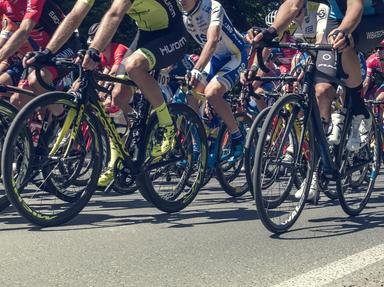Quiz Answer Key and Fun Facts
1. The first cycling road race which contributes to riders' rankings starts on the third Tuesday of January each year in Adelaide, South Australia. What is the name given to this race?
2. In the middle of March, professional cyclists participate in "the Spring Classic", first of the five races classified as Monuments on the tour. Between what two Italian cities is the longest professional one-day race held?
3. The second Monument of the European road cycling season is nicknamed "Vlaanderens mooiste" in one of the official local languages, and is one of the most important races held in Belgium. What is it called in English?
4. In early April, cyclists compete in the Paris-Roubaix race, which actually now starts in Compiegne, about 60 km northeast of Paris. Since 1977, the winner has received an unusual item as part of his prize. What is it?
5. In mid to late April, the Amstel Gold Race attracts road cyclists from around the world. Riders spend most, if not all, of the race in the province of Limburg. For which country is this the most important road cycling race?
6. The Liege-Bastoigne-Liege race, the oldest of the five Monument races, is considered to be part of the Ardennes double, along with the La Fleche Wallon. At times the two races have been staged on successive days. When that occurred, what special nickname was given to the combined event?
7. The first of the three Grand Tours takes place over three weeks in late May and early June. Which race, originally started to boost the circulation of the magazine "La Gazzetta dello Sport" was first staged in 1909?
8. In July, the Tour de France dominates the road cycling scene. The course of this race changes every year, but where has it finished since 1975?
9. In September, road cyclists participate in the final Grand Tour event, which usually finishes in Madrid. What is the name of this race?
10. The fifth and final Monument event on the European road cycling calendar is raced in mid-October. It is no longer part of the UCI Pro Tour, but as the last event in the UCI World Ranking Calendar it can be decisive in that title. Nicknamed "la classica delle foglie morte" ("classic of the falling leaves"), in which country does the Giro di Lombardia take place?
Source: Author
looney_tunes
This quiz was reviewed by FunTrivia editor
Nightmare before going online.
Any errors found in FunTrivia content are routinely corrected through our feedback system.

